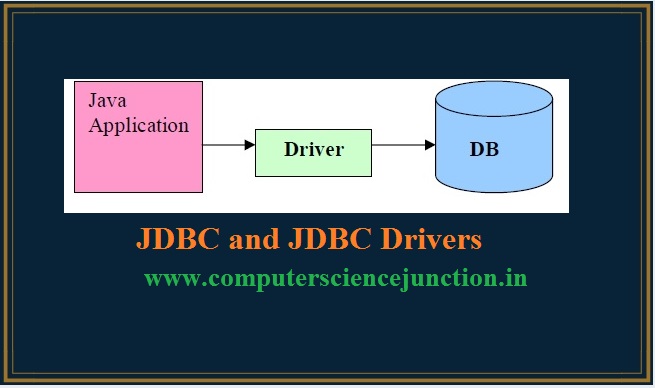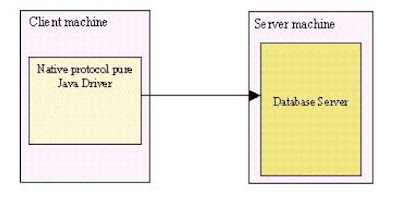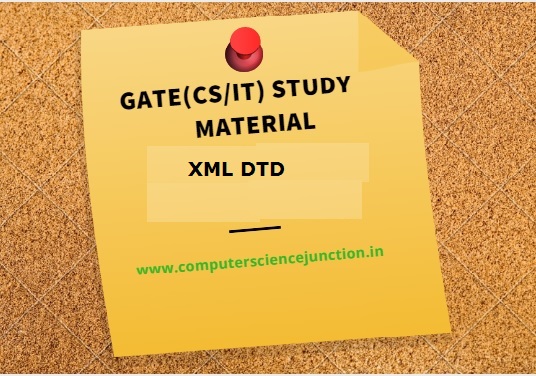JDBC and JDBC Drivers
Java Data Base Connectivity (JDBC) is an Application Programming Interface which is one of important usable in different business applications. The reason behind the widely use of JDBC is that because most of the business application software use database.
In order to retrieve and store the data in database through GUI we need some kind of connectivity between front end database . Java Data Base Connectivity (JDBC) connects java application with database.
JDBC Drivers
JDBC API Package is java.sql and we imports this package in our jdbc application program. In this package there are many interfaces. To connect java application with any database we require a jdbc driver which implements all the interfaces provided in sql package.
Java provides jdbc-odbc bridge driver. It uses ODBC drivers available on your machine. It has limited operations. So it is not suitable for production environment.
Types of jdbc drivers in java
Different types of jdbc drivers in java with examples are as follow:
Type 1 JDBC Driver
The type 1 JDBC driver, JDBC-ODBC Bridge simply translates all JDBC calls into ODBC (Open DataBase Connectivity) and send them to ODBC Driver. Advantage of type 1 jdbc odbc driver is that it is easy to use and can be connected to any database but it’s Performance can be degrades because type 1 jdbc driver calls are converts into odbc function calls.
Type 2 JDBC Driver
Second type of JDBC drivers is the native-API/partly Java driver which converts JDBC calls into database specific calls for the databases. Example of such database are SQL Server, Informix, Oracle or Sybase. This type of driver communicates directly with the database server. It requires that some binary code be present on the client machine.
Advantage of type 2 jdbc driver is that it provide better performance as compare to type 1 jdbc odbc bridge. This type of driver Need Vendor library and native driver should be installed on client computer.
Type 3 JDBC Driver
JDBC driver type 3 driver is the net-protocol/all-Java driver and its architecture is based on three-tiered approach where at first JDBC database requests are passed through the network to the middle-tier server.
Now this middle tier server translates the received request either directly or indirectly to the database-specific native connectivity interface to further the request to the database server.
Advantages of using this type of driver is that there is no need of client side library because application server itself perform many tasks.If the middle-tier server is written in java then it can use Type 1 and Type 2 Driver also.
Type 4 JDBC Driver
JDBC driver type 4 is the native-protocol/all-Java driver which converts JDBC calls into the vendor specific database management system (DBMS) protocol.It make it easy for client applications to communicate directly with the database server.
Type 4 drivers are completely developed in Java . Advantage of this is that it achieve platform independence and eliminate deployment administration issues.
Advantages of Type 4 driver is that it gives better performance as compare to all other drivers and there is also no need of client and server side driver. But it is database dependent.
Next : – jdbc steps to connect database in java
Related










